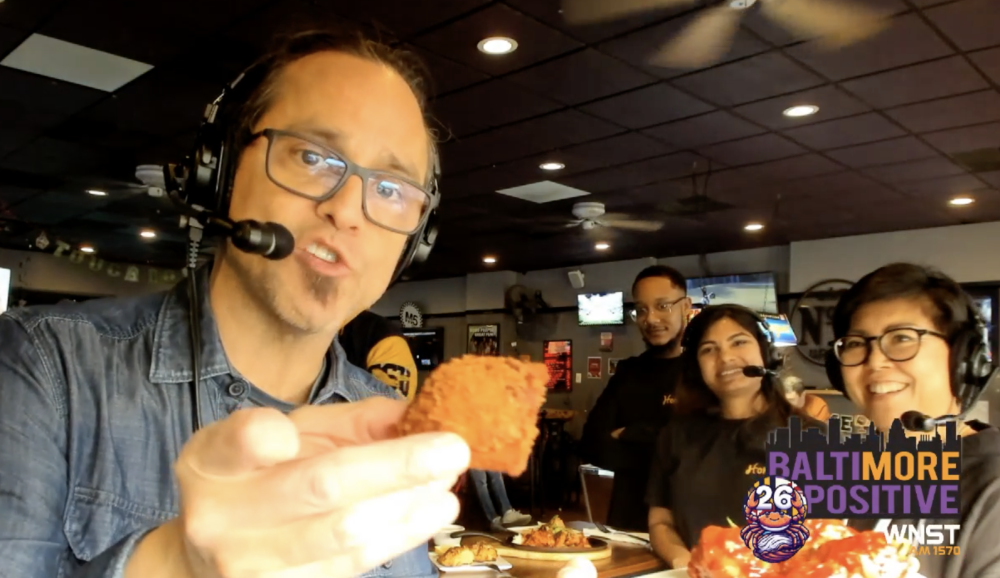With veteran pass rusher and free-agent target Ezekiel Ansah joining Seattle last week, the Ravens defense faces a likely reality with organized team activities set to begin next week.
Barring something completely unforeseen, general manager Eric DeCosta probably isn’t upgrading the current group of pass rushers to a substantial degree. That’s not to say a veteran won’t still be added to the mix as former Los Angeles Ram Matt Longacre reportedly visited the Ravens Monday, but the quality of edge defenders still on the market isn’t dramatically different from the in-house options behind veteran Matt Judon that include third-round rookie Jaylon Ferguson and 2017 Day 2 picks Tyus Bowser and Tim Williams.
It’s not as though DeCosta hasn’t tried to add a veteran pass rusher after the departures of 2018 sacks leader Za’Darius Smith and the franchise’s all-time sacks leader in Terrell Suggs, but the short-term contracts given to Ansah and Justin Houston — who signed with Indianapolis — were a bit rich for a team trying to maintain an optimal salary-cap situation for 2020 and beyond. Few would argue with the decisions not to pay Smith and Suggs what they ultimately received from their new teams, but the defense is still losing just over 40 percent of its sack production from last year when you include the two combined sacks from fellow departures C.J. Mosley, Eric Weddle, and Brent Urban.
Of course, DeCosta hasn’t just stood pat defensively after losing those key players as his first major free-agent signing as general manager was six-time Pro Bowl safety Earl Thomas to a four-year, $55 million contract. Injuries limited the 30-year-old to just 29 games in his final three seasons with the Seahawks, but Thomas represents a substantial upgrade — at least on paper — from the 34-year-old Weddle, who was using his intellect to overcome his physical limitations more than ever last season.
That upgrade to a secondary already viewed as one of the NFL’s best and the current concerns about the pass rush spark a fascinating question, one the football analytics community has debated at length in recent years.
Which is more valuable: coverage or pass rush?
The phrase “you win in the trenches” being drilled into ours heads for decades may have you laughing at the very notion of pass coverage being more important than pressure, but that’s a growing stance in today’s pass-happy NFL in which quarterbacks are getting rid of the ball more quickly and teams are using more play-action calls to neutralize defensive fronts. To be clear, pressure remains very important as the two feed off each other — you want both in a perfect world — but an edge rusher getting stonewalled by an offensive tackle typically brings less potential consequence than a defensive back faltering for even a fraction of a second in coverage on a given pass play.
Asked about which was more precious earlier this offseason, head coach John Harbaugh offered an answer seemingly agreeing with the analytics community’s position of coverage being more valuable than pass rush. It reflects Baltimore’s greatest defensive strength going into OTAs.
“I think coverage in the back end because I think you can create pressure,” Harbaugh said at the league meetings in March. “Pressure breaks pipes. You don’t have to be a one-dimensional, one pass-rush type guy. But the more good pass rushers you put into a pressure scheme, obviously, the better off you’re going to be. And you have more options. You can rush four, you can rush three. You can rush different people.
“I do believe you have to cover people in this league, but I can go the other way if you really squeeze me on it. But I don’t like not being able to cover people in all honesty. Maybe that’s just my own bias — I played defensive back a little, coached it. I really do believe you have to be able to cover people.”
It’s not as though the Ravens don’t desire good pass rushers, but they’ve made quality and depth in the secondary a priority over these last few years. After enduring draft disappointments Matt Elam and Terrence Brooks and underwhelming “value” signings in the three seasons following Super Bowl XLVII, Baltimore has awarded big contracts to safeties in three of the last four offseasons. Last month also marked the fifth consecutive year in which the Ravens drafted a cornerback in the fourth round or earlier, creating a talent pipeline to avoid a repeat of 2014 when street free agent Rashaan Melvin was starting playoff games due to the lack of secondary depth entering that campaign. The recent investment of draft capital in cornerbacks coincided with signing veteran Brandon Carr to a four-year, $24 million contract two years ago and making Tavon Young the highest-paid slot cornerback in the NFL in February.
Perhaps the best indication of their current philosophy is the Ravens retaining cornerback Jimmy Smith despite having two other starting-caliber — and cheaper — cornerbacks in Marlon Humphrey and Carr and talented young options behind them. Smith will turn 31 in July and carries the highest 2019 cap number on the team at $15.85 million, which led many to view him as a likely cap casualty this offseason. Injuries and suspensions have limited him to 12 or fewer games in six of his eight NFL seasons and he was coming off an uneven 2018, but Baltimore has expressed little apparent interest in compromising its deep depth in the secondary, even if the $9.5 million saved by releasing Smith could have helped land a free-agent pass rusher like Houston or Ansah.
It remains to be seen how the pass rush fares without Za’Darius Smith and Suggs, whose combined 150 career sacks are more than twice as many as the 64 career takedowns produced by the entire current roster. Does a secondary potentially better than last year force opposing quarterbacks to hold the ball longer to create more pressure and sack opportunities for young rushers? Does the potential lack of pressure from inexperienced edge defenders cause more coverage breakdowns than we witnessed last year? Or, as Harbaugh suggested, are the Ravens confident in their ability to scheme pressure — as defensive coordinator Wink Martindale did last year — as long as the secondary performs at a high level?
The Ravens are pretty clearly betting on the coverage side of the give-take relationship, which should provide an interesting case study in the overall debate. Baltimore is depending on that philosophy minimizing what some fear could be a substantial drop-off on the defensive side of the ball.


























